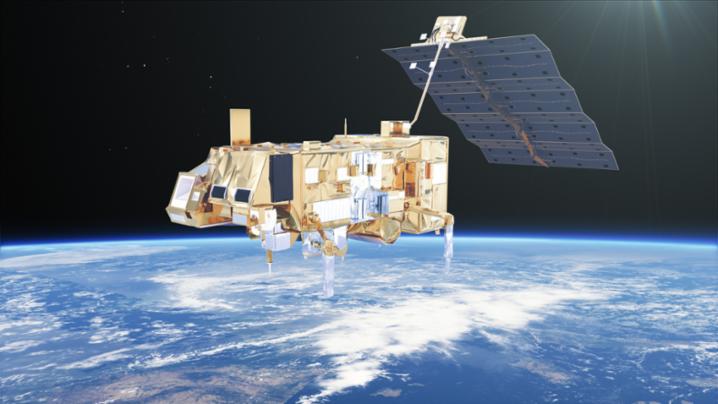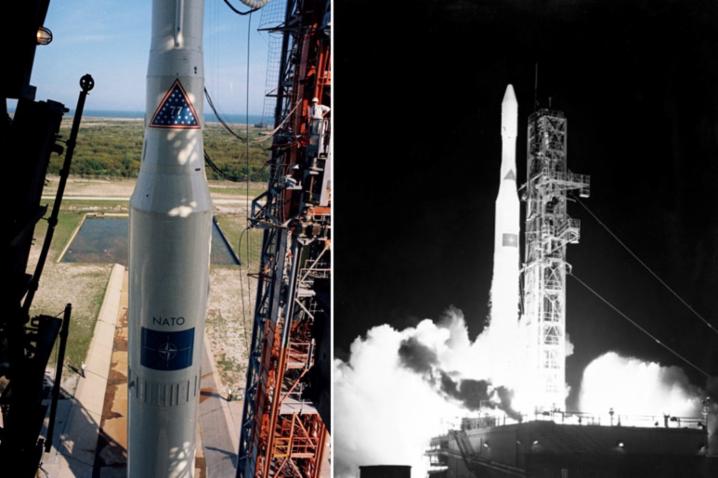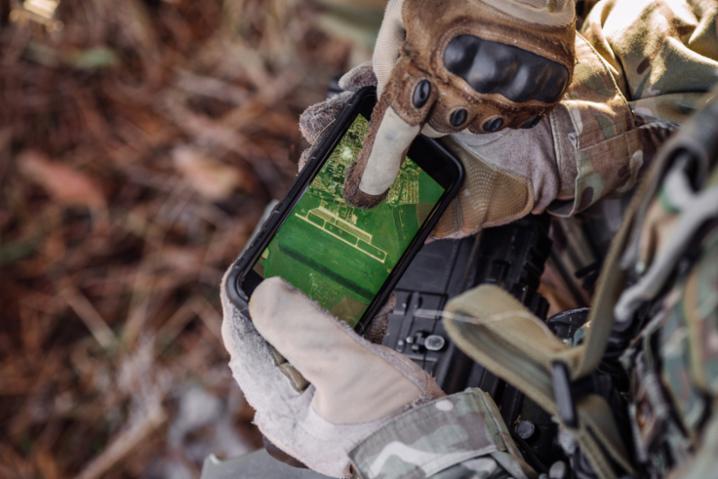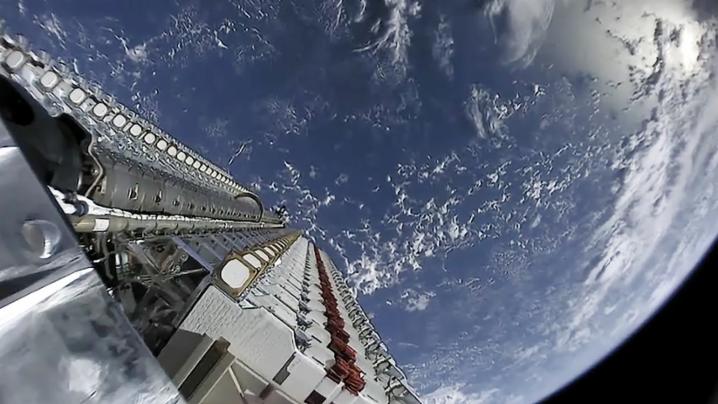Why now? Why does space matter for the Alliance? What role could and should NATO play with regard to space?
When I joined NATO staff in 2012, space would only come up in a conversation with reference to “office space” (undoubtedly a sensitive matter in and of itself). Only a decade ago, most Allies were not prepared for a discussion about space in NATO, and there was no obvious need for it. The priority for the Alliance, at that time, was Afghanistan.
NATO has come a long way since.
In July 2018, at the Brussels Summit, Allied leaders recognised that space is a highly dynamic and rapidly evolving area, which is essential to a coherent Alliance deterrence and defence posture, and agreed to develop an overarching NATO Space policy. Less than a year later, NATO defence ministers agreed such a policy. And in December 2019, Allied leaders welcomed the recognition of space as a new operational domain – alongside air, land, sea and cyberspace.
There was some speculation in the media that this flurry of space activity at NATO had been triggered by President Trump’s initiative to establish a United States Space Force (USSF). In fact, these were deliberated Allied decisions preceded by and based on years of careful and thorough reflection and debate. Some of the underlying factors that drove the decision to create the USSF, also influenced the Alliance’s decisions on space policy and space domain. Coincidentally, France has also adopted its first Defence Space Strategy, and is set to reorganise its Air Force into Air and Space Force.

Space impacts on everyday life, from banking and agriculture to weather forecasts and television. Most satellites serve multiple civilian, commercial or security functions. So weather satellites, such as the one pictured here, could well be gathering military intelligence too. © ESA
Paradoxes of space
Space is a unique physical realm that can be characterised by a number of paradoxes.
New but old – Although NATO declared space as a ‘new’ operational domain, there is not much new about space. Space pre-dates Earth itself. Space has been captivating human imagination for centuries. By studying space, humans as a species came to learn about their own habitat.
Even in security and defence terms, space is not exactly ‘new’. It was intimately linked to nuclear deterrence since the early days of the Cold War. Inter-Continental Ballistic Missile (ICBM) technology was essential for both – the nuclear race and the space race.
Space has been the domain in which the competition between the Soviet Union and the United States was the most spectacular and breath-taking – but also remarkably peaceful.
While the launch of ‘Sputnik’ in 1957 was seen as a victory for the Soviet Union, it established an important precedent of peaceful passage of satellites over the Earth: the Americans took no action when the ‘Sputnik’ passed over the territory of the United States, nor did the Soviets when the American satellites started passing over their territory. This precedent effectively established space as a global commons, akin to open seas, and led to the Outer Space Treaty of 1967, which, among other things, outlawed the deployment of nuclear or other weapons of mass destruction in space.
Empty but crowded – Space is vast and empty, but its useful part – the one closest to earth – is increasingly crowded, congested, contested and competitive. At least 50 different nations and multinational organisations own and operate satellites, including some 15 Allies and an increasing number of commercial, non-governmental actors. Currently, an estimated 2,000 active satellites are in orbit and hundreds of satellites are being built for launch over the next decade.
Geostationary orbit in particular is a finite resource, as are electromagnetic frequencies for data transmission. A limited number of slots are available. (Located 35,786 kilometres above Earth's equator, geostationary orbit allows satellites to match Earth's rotation, which is very useful for monitoring weather, communications and surveillance.)
In addition to the 2,000-odd satellites currently spread out from 160 km low-Earth orbit to 36,000 km high-Earth orbit, at least some 500,000 pieces and counting of debris orbit the Earth, of which 20-30,000 could cause damage.
Far but here – Space seems far away and unreachable but it has immediate impact on everyday life, from banking and agriculture to weather forecasts and television. And it is not that far – the Karman line, which is commonly viewed as the limit where aerospace ends and space begins, is only 100 km from the surface of the Earth. Arguably, space-enabled technologies have significantly accelerated the speed of communications thereby mitigating the tyranny of distance.
Exclusive but democratic – Space had been a very strategic and exclusive domain dominated by a few great powers, until it became increasingly competitive. Today, the most powerful space-lift rocket belongs to a commercial actor, SPACE-X. The use of space-enabled products is available to anyone with a GPS gadget or a wifi connection.
And it is now an expanding big business in its own right, currently estimated at 350 billion euros. Space-based systems impact environment and agriculture, transport, communications, scientific research and banking. The United States considers space as part of its critical national infrastructure, and access to and freedom to operate in space a vital national interest. Similarly, France seeks better space situational awareness in support of national decision-making and to improve the protection of national and key European space assets.
Peaceful but lethal – Space brings efficiency and effectiveness to military operations. It brings precision and lethality to strike capabilities. In this regard, space has been militarized ever since the start of the space age.
At the same time, space itself as a unique physical realm, remains remarkably peaceful. No kinetic inter-state conflict or aggression has ever taken place in space. Effectively, it is a safe sanctuary for all actors.
Transparent but dual-use – Space is also a transparent domain. Any launch into space can be monitored and tracked, unlike submarines or stealth aircraft, for example. There can be no ambiguity about attribution: the state is always responsible for all its space assets, regardless of whether they are government, military or commercial. For instance, even if the Russians claimed that the satellite that harassed a French-Italian satellite in 2019 was a rogue satellite – or perhaps a satellite on vacation that happened to be in the neighbourhood by accident – the Russian state would still bear sole responsibility for its actions and any fallout.
At the same time, space is a very dual-use domain. A satellite masquerading as a weather satellite can well be a military intelligence gathering satellite, or both. In fact, there are very few uniquely military functions that satellites perform – nuclear command and control, missile warning and targeting. Most satellites serve multiple civilian, commercial or security functions.
Strategic but also tactical – Although space started off as a strategic domain, today it is very much used for operational and tactical advantage on the battlefield.
Finally, space is inherently global, a truly 360-degree domain. Any conflict in space would affect all users of space – perpetrators, victims and bystanders. Even in the case of a conflict in which NATO Allies were not participating, their space capabilities could be directly affected and even destroyed.

For decades, NATO operated satellites over Europe and North America under its own SATCOM satellite project to provide strategic communications in a quick and secure manner. A total of eight satellites were launched – the first in 1970 from Cape Kennedy, USA. © NATO
Why now?
Even for the Alliance, space is not a new domain. NATO went into space before space came to NATO. For decades, NATO has operated its own SATCOM satellite programme. Today, these now defunct satellites are still orbiting the Earth, carrying the NATO logo.
Yet, until 2019, NATO did not have any actual space mandate, policy or concept. Several reasons lie behind this recent change of gears.
First, space itself has changed dramatically over the last few years. We see many more actors in space. Moreover, space capabilities are becoming cheaper and more accessible, while also more vulnerable to accidents and debris, as well as malign action.
Second, the security environment has changed. For years, if not decades, the Alliance was facing a relatively benign environment in which it would launch peacekeeping or crisis management missions and operations mostly at its own discretion. However, over the last few years, the rules-based international order and the security of the Alliance and individual Allies have increasingly been threatened, challenged or contested by multiple malign actors in multiple domains, including space.
Third, NATO is increasingly reliant on space for all its missions, activities and operations: collective defence, crisis response, disaster relief and counterterrorism – all depend on information delivered from and through space.
Presumably, these reasons also prompted the key space-faring Allies to recognise that space is an increasingly shared security issue, and therefore needs to be on NATO’s deterrence and defence agenda.
Space threats
Space gives Allies unprecedented edge in operations by lifting the ‘fog of war’. Allies have a critical edge in space over potential adversaries. They control over 50 per cent of all active satellites. Space gave an edge in operations such as the first Gulf War in 1991 (sometimes called the first space war) and the Kosovo campaign in which GPS was used to improve targeting.
However, increasing reliance on space increases vulnerability. ‘A day without space’ is a growing concern. Space dependence makes it also a high priority target for strategic competitors. The US Defence Intelligence Agency – in its publication "Challenges to Security in Space" (January 2019) – asserted that “some foreign governments are developing capabilities that threaten others’ ability to use space. China and Russia, in particular, have taken steps to challenge the United States.” In their 2016 techno-thriller “Ghost Fleet: a Novel of the Next World War”, military futurists August Cole and P.W. Singer speculate that an opening act in a war between China and the United States for control over the Pacific would take place in space, in order to “blind: the enemy”.
Space threats can take multiple forms because the space system is a large target, comprising a space-based segment, a ground control terminal, data links and the actual user. It is enough to take out one segment and the system becomes useless. Threats can be low end, non-kinetic and reversible, for example, jamming and spoofing of communication signals and laser-dazzling sensors. Threats can also behigh-end with irreversible effects such as ground, air or space-based anti-satellite weapons.
Cyber threats can impact on each of the segments – software of the satellites, ground control, data links and the user.
Environmental hazards, unintended collision and debris also pose risks.
From a NATO perspective, the space programmes of peer or near-peer state actors, such as China and Russia, are of particular interest. Both nations have ambitious space programmes. Not unlike nuclear weapons, space-faring is a status symbol for great powers. China’s vision– as set out in its Space White Paper (December 2016) is – “to explore the vast cosmos, develop the space industry, and build China into a space power is a dream we pursue unremittingly.” For Russia, it is part of the legacy of the Soviet Union’s formidable space programme.
Both countries have rival systems to GPS – GLONASS (Russia) and BEYDOU (China). Recently, China landed a rover on the dark side of the moon and a manned base on the moon is planned. These are benign examples of peaceful competition in space.
Much more concerning are their space-related military programmes. The military doctrines of these countries consider space to be an important element of modern warfare and view the development and employment of multiple counter-space capabilities as a way to undermine the Allies’ defence and security. For example, Russia has been jamming GPS signal during NATO exercises.
Iran and North Korea are known to have indigenous space launch capabilities.
Terrorist organisations have been known to use “google maps” and GPS to plan attacks.

The movement of NATO troops often relies on GPS. But this navigational tool can be vulnerable to counter-space capabilities – for example, Russia has been jamming GPS signal during NATO exercises. © Government Technology Insider
Why space matters to NATO
Because of this changed and evolving security environment, space is also increasingly essential to NATO. The Alliance maintains a broad approach to deterrence and defence, which draws upon all the tools at its disposal, to provide the Alliance with a wide range of options to be able to respond to any threats from wherever they arise – a 360-degree approach. And space is as 360-degree as it gets.
Space provides a number of essential military functions in peacetime but also in war. Space is essential for the Alliance’s situational awareness and early warning, especially in a non-discretionary environment, where early identification of forces massing at NATO’s borders will be essential to deter or counter aggression.
Satellite imagery is essential for informing decision-making. Space by itself cannot create ‘facts on the ground’ but it is a key enabler, especially for recognition and attribution. For instance, satellite imagery from east Ukraine has influenced NATO’s decision-making with regard to that conflict. Such evidence-based decision-making is particularly important in these times of ‘fake news’.
Likewise, space is an essential enabler for command and control, for both operational awareness and communication. Without space, operational commanders would be mostly deaf and blind.
Space is essential for deployed forces – for communication, positioning and movement and targeting, as well as for tracking friendly forces. Enablement and reinforcement also rely on space support. Moving large formations with heavy equipment across the Atlantic and across Europe by land, air or sea to wherever they are needed would be so much harder without GPS.
Satellites can pick up missile launches (essential for early warning of decision-makers) and provide weather forecast (important for mission planning). They also provide situational awareness of what other actors are doing in space, to space, or from space.
Space is unique in that it depends on other domains less than they depend on space (with the exception of cyber, which is critical for space for data links). At the same time, space cannot win a conflict on its own. But without space, winning a conflict would become immensely more difficult.
Space deterrence conundrum
Space is a bit like nuclear weapons: without nuclear weapons and without space, we would be back to industrial-era indiscriminate, total demolition warfare.
The fate of space has been intertwined with nuclear deterrence since the early days, in different ways. Space and nuclear programmes competed for attention and budget. Land-based and submarine-based missile systems were prioritised over military-manned spaceflight. Theories of placing nuclear weapons on the moon were dismissed on the understanding that a nuclear war would be long over before missiles arrived from the moon.
Placing missiles in orbit would resolve the distance problem but would make them more vulnerable to attack, compared to, for example, submarines. Hence, the 1967 Outer-Space Treaty.
A major surprise attack by an adversary on Allied space capabilities could significantly undermine the credibility of nuclear deterrence (for example, by compromising the Alliance’s ability to detect launches of Intercontinental Ballistic Missiles). It could indeed be a precursor to major global conflict.
How to deter such attacks? Deterrence theory stipulates two ways: deterrence by denial (deny adversary the benefits it is seeking) and deterrence by punishment (ensure that the cost for its action will be prohibitive for the adversary).
The credibility of deterrence – in either of its iterations – rests on a combination of 1) political resolve, 2) capability to inflict pain and 3) clear communication of said resolve and capability. It is admittedly difficult to use space capabilities for messaging – unlike aircraft or ships. Showing off a tiny cube sat soundlessly orbiting in empty space is not a very threatening message. It is also extremely difficult to deny an anti-satellite attack. Moreover, some countries like North Korea and Iran do not have similar space capabilities that could be held at risk, so a deterrence through a threat of symmetric and proportionate punishment (“you take down our satellites, we will take down your satellites”) is not a viable option.
In light of this conundrum, the United States has publicly adopted cross-domain deterrence (in its National Security Strategy), which is based on the idea of punishment: “any harmful interference with or an attack on critical components of our space architecture that directly affects this vital US interest will be met with a deliberate response at a time, place, manner, and domain of our choosing.”
Should deterrence fail, the best defence against an anti-satellite weapons threat would be to go after – through cyber or kinetic means – the enemy’s launch capabilities and ground control stations.
Kinetic action produces debris, the ultimate deterrence to actual war in space. Chinese and Russian investment in space capabilities should make them also increasingly dependent on space. Because of space debris, space can be considered a realm of ‘MAD’ – mutually assured destruction. A war in space is effectively unwinnable. Unless an irrational actor with anti-space capabilities would feel very disadvantaged and desperate, and would consider making space inoperable a victory.
In light of the Alliance’s space-related vulnerability, an ever bigger focus needs to be placed on resilience and survivability of space capabilities. This can be achieved by placing more satellites in orbit, developing more multi-purpose satellites, involving more Allies and doing so in cooperation with commercial actors. Maintaining a robust infrastructure to service or quickly replace disabled satellites will be critical. These are all ingredients of an effectively deterrence by denial: no matter how many Allied satellites an adversary would be able to target and take out of action, it would not affect the Alliance’s ability to rely on space support to its operations.

To maintain NATO’s ability to rely on space support to its operations, more focus needs to be placed on resilience and survivability of space capabilities. This can be achieved by placing more satellites in orbit and developing more multi-purpose satellites in cooperation with commercial actors. Picture © SpaceX Starlink Mission
What’s next?
The adoption of NATO Space Policy and the declaration of space as an operational domain allows the Alliance to adapt with the times, in an evolutionary rather than revolutionary manner. These are small steps, not a giant leap.
NATO – an organisation created to serve international peace and security – will build on these Allied decision in a considered and deliberate way. Allies will continue to comply with international law in general and the 1967 Outer Space Treaty in particular.
NATO will not become an autonomous space actor. NATO Secretary General Jens Stoltenberg has made it clear that “NATO has no intention to put weapons in space. We are a defensive Alliance.” NATO will continue to by and large draw on national space capabilities in support of its missions and operations.
But now NATO will also be able to serve as a forum for political-military consultation on space matters, share relevant information and address interoperability. Implementation of space as an operational domain will allow NATO’s military commanders to properly and fully take into account space requirements in training and exercises as well as defence and operational planning. This will help ensure that the Alliance has reliable access to space products and services, when and where necessary.
It will enable the Alliance to enhance its situational awareness across multiple domains. It will also improve NATO’s vigilance in the face of the efforts by a number of countries to develop sophisticated technologies that could challenge Allies’ freedom to operate in space and use space-enabled services.
The Allies will need to develop a shared space domain awareness and NATO will have to raise “space IQ” across its different entities, as there will be growing demand of space expertise.
A number of other outstanding issues will have to be addressed in the near future. For example, should NATO adopt a declaratory policy that would include an articulation of how space relates to Article 5? Should NATO make its Space Policy public (like it has done with the Alliance Maritime Strategy and the Joint Air Power Strategy)? What kind of relationships, if any, should NATO forge with the European Union, the European Space Agency, the United Nations and individual partner countries? Should NATO play any role in the development of norms and rules of behaviour in space?
These are all important issues to consider and NATO will do so.
Most importantly, NATO is in space – and now space is also in NATO.
